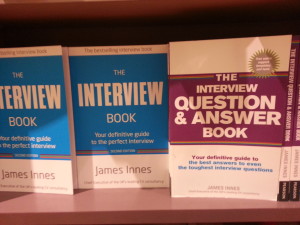Did you know that a recent survey of 4000 employers in Singapore revealed that virtually all of them (99%) say they have between 10% to 50% bad hires in their organization?
What this means is that if an organisation has 10 employees, it may have between 1 and 5 employees who are not performing to expectations.
Now that is a staggering number of bad hires by any stretch of the imagination!
So if you are a HR Professional or a Hiring Manager and you conduct job interviews, you should be concerned!
The big question that we should be asking ourselves is “WHY? Why do organizations end up with so many bad hires?”
The 7 Shocking Truths
To get an idea of why so many organizations end up with so many bad hires, perhaps we should look at the following 7 shocking truths about candidate Resumes:
- 46% of resumes include discrepancies in job candidate’s employment and educational histories
- 40% of executives lie about their education
- 35% lie about accomplishments or job missions
- 53% of all job applications contain inaccurate information
- 34% of all applications contain outright lies about experience, education, and ability to perform essential functions on the job
- 9% of job applicants listed false employers, or identified jobs that didn’t exist
- 11% of job applicants misrepresented why they left a former employer
Other surveys have also uncovered similar patterns of deception. For instance:
- 53% of all job applications contain inaccurate information
- 34% of all applications contain outright lies about experience, education, and ability to perform essential functions on the job
(Sources: March 8, 2014 The Daily Stats by Harvard Business Review; www.hireright.com)
Some have commented that these statistics are mostly US-based statistics and questioned if these numbers apply here in our Asian context.
Unfortunately, we do not have similar statistics here for the Asian region (well, at least I have not found any so far. So if anyone reading this knows where to find these Asian-centric statistics, please let me know!). But I would boldly venture to state that if we were to do a similar study or survey here in the Asian region, the results wouldn’t be very far off.
Endless Resources
In addition, I was browsing in a bookstore recently and came across an entire shelf of these books:
I also did a search on Google on “Answers to tough interview questions” and Google returned over 10,000,000 hits!
What this means is that candidates today have an enormous amount of resources they can fall back on in order to get themselves fully prepared for job interviews.
With such odds stacked up against HR Professionals and Hiring Managers, it is therefore not surprising that your chances of hiring the wrong candidates are so high!
Now the BIGGER question is: How do you minimize the risk of hiring the wrong candidates?
Are there any ways you could mitigate the risk of hiring the wrong person and minimize the number of bad hires in your organization?
The onus is on us hiring managers and HR professionals – who act as the Gatekeepers of our organisations – to weed out the wheat from the chaff. However the sad fact is that most of us hiring managers and HR professionals who shoulder this heavy responsibility as Gatekeepers are not trained in effective interviewing and selection techniques.
As businesses get more and more competitive, and our world becoming more volatile, uncertain, complex and ambiguous, it becomes imperative that you as a responsible hiring manager to insure you know what to look for and how to pick the right candidates every time. This will save you tons of headache, heartache and psychological pain going forward.
If you are putting up with mediocre, unmotivated and uncooperative employees, then it is time you did something about it.
About the Author
STEVEN LOCK is a Speaker, Trainer, Author and a Leadership Coach. Steven brings with him two decades of corporate experience.
Steven is passionate about helping organisations transform their teams into high performing teams. He does that by first helping organisations identify and hire the right people, and then training their leaders and managers on how to manage and lead their people to achieve peak performance consistently.
He is the developer of The CAAP® High Performance Model. This model focuses on Culture (cultural fit), Attitude, Aptitude and Personality dimensions of their employees and job candidates. It is a highly practical, effective and proven approach. Steven believes that for organizations to be truly successful and perform at their highest levels, they need to shift their mind-sets to having the RIGHT people on-board – and not necessarily the best or the brightest.
Steven is the Author of two books:
• “Hiring for Performance: The CAAP® Model to Hiring and Building High-Performance Teams.”
• “The Right Talent: The Agility-Focused Interviewing Approach™ to Hiring the Right Candidate Every Time.”
He is also the developer of The Leadership STYLE Report™ that is based on Dr. Daniel Goleman’s research on leadership styles.
Steven has been featured on MediaCorp’s live radio show The Breakfast Club on 938FM, and has contributed numerous articles to Singapore Business Review, ST Recruit, SHRI Human Capital and other publications. His comments on Team Collaboration was quoted in the Spring 2014 Edition of the Harvard Business Review OnPoint Magazine.
Steven holds a Master of Business (Information Technology) from Curtin University of Technology, Western Australia. He is a certified DISC & MBTI® (Step I & II) practitioner.
Recently Steven was invited as a guest speaker to share about his CAAP(R) High Performance Model with over 600 delegates at the Vietnam HR Summit 2016 in Ho Chi Minh City.



